1881 Morgan Silver Dollar Coin Value: How Much Is It Worth?
1878 saw the launch of one of the most collected coin series in history: the Morgan dollar. We’re going to look at Morgan dollars from one particular year, 1881. And we’ll walk you through the 1881 silver dollar value, its history, and what makes a coin really special.
Ready to find out more about what separates an interesting coin from a truly valuable one? Step this way.
1881 Silver Dollar Value Chart |
||||
| Mintmark | Extremely fine | MS63 | MS65 | MS67 |
| 1881 (P) No Mint Mark Silver Dollar Value | $50 | $140
Prooflike: $315 Deep Mirror Prooflike: $500 |
$600
Prooflike: $900 Deep Mirror Prooflike: $4,000 |
$60,000 |
| 1881 S Silver Dollar Value | $50 | $96
Prooflike: $150 Deep Mirror Prooflike: $280 |
$265
Prooflike: $325 Deep Mirror Prooflike: $1,100 |
$1,050
Prooflike: $1,900 Deep Mirror Prooflike: $11,500 |
| 1881 O Silver Dollar Value | $50 | $120
Prooflike: $235 Deep Mirror Prooflike: $475 |
$1,200
Prooflike: $3,500 Deep Mirror Prooflike: $8,500 |
$75,000 |
| 1881 CC Silver Dollar Value | $490 | $850
Prooflike: $900 Deep Mirror Prooflike: $1,250 |
$1,250
Prooflike: $1,500 Deep Mirror Prooflike: $3,750 |
$6,000 |
1881 Silver Dollar Value Guides
1881 (P) No mint mark Silver Dollar Value
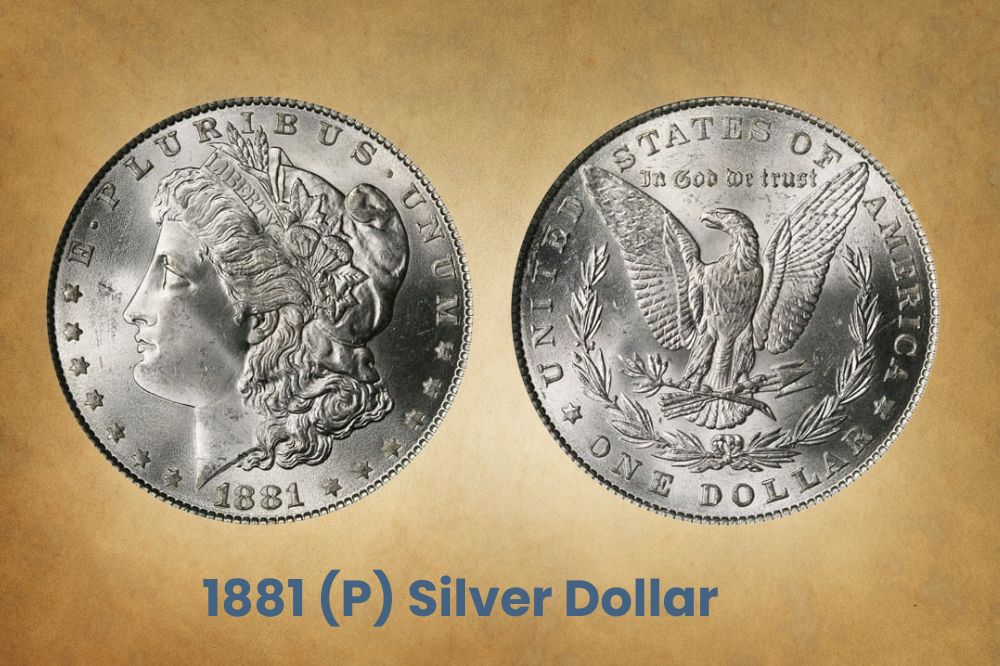
1881 was one of the few years when Philadelphia didn’t produce the highest number of Morgan dollars. That honor went to San Francisco, which struck around one and a quarter times as many coins. But over 9 million coins were still struck in Philly that year.
You can get hold of a nice example of a circulated coin without having to spend big money. A coin graded XF (extremely fine) 45 can be bought for around $50. And even a gem quality MS65 coin is worth around $600. A lot of money, certainly, but within reach of many collectors.
Prices increase steeply at MS66+, where the number of coins known to exist drops into double digits. An MS66+ example, without a prooflike designation, is worth about $4,750. At MS67, that value increases to $21,000. And at MS67+, there’s only one known coin. It’s value? About $60,000.
1881 S Silver Dollar Value
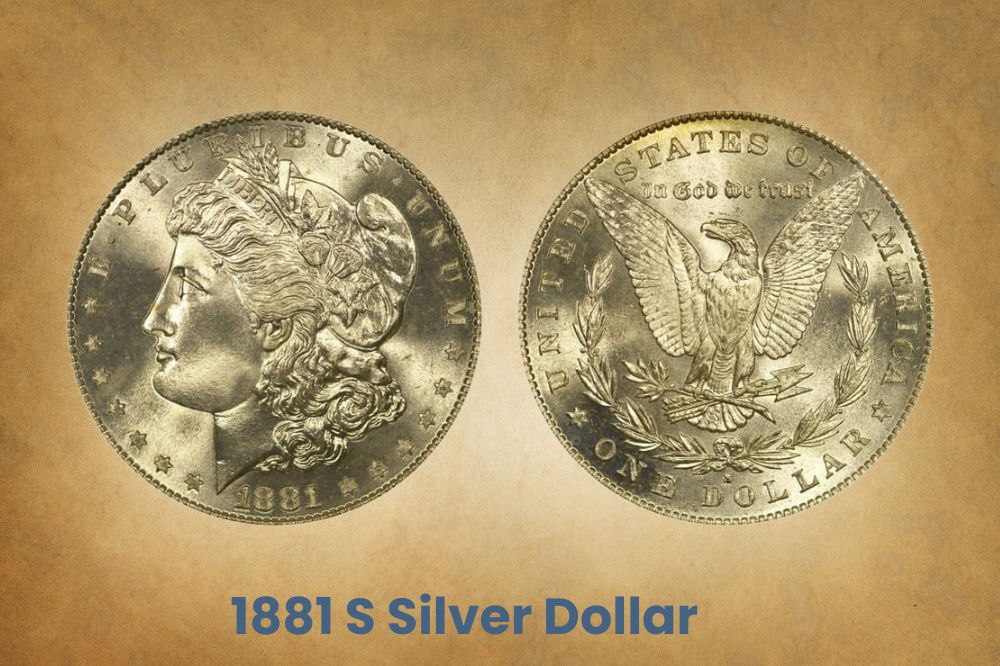
1881 saw San Francisco produce its second largest number of Morgan dollars of any year. Almost 13 million coins were struck there.
But about half of those coins were never actually circulated at the time. Instead, they were released in 1962, making this one of the easiest Morgan dollars to find in mint state. For that reason, even highly graded coins can be purchased at a relatively modest price.
A San Francisco Morgan dollar graded MS67 is today valued at just north of $1,000. If it’s designated prooflike, that value increases to just under $2,000. And a coin of the same grade with the deep mirror prooflike (DMPL) designation is worth around $11,500.
The finest quality San Francisco Morgan dollar from 1881 known to exist is graded MS69. There are actually two coins at this grade, and each one is valued at $160,000.
1881 O Silver Dollar Value
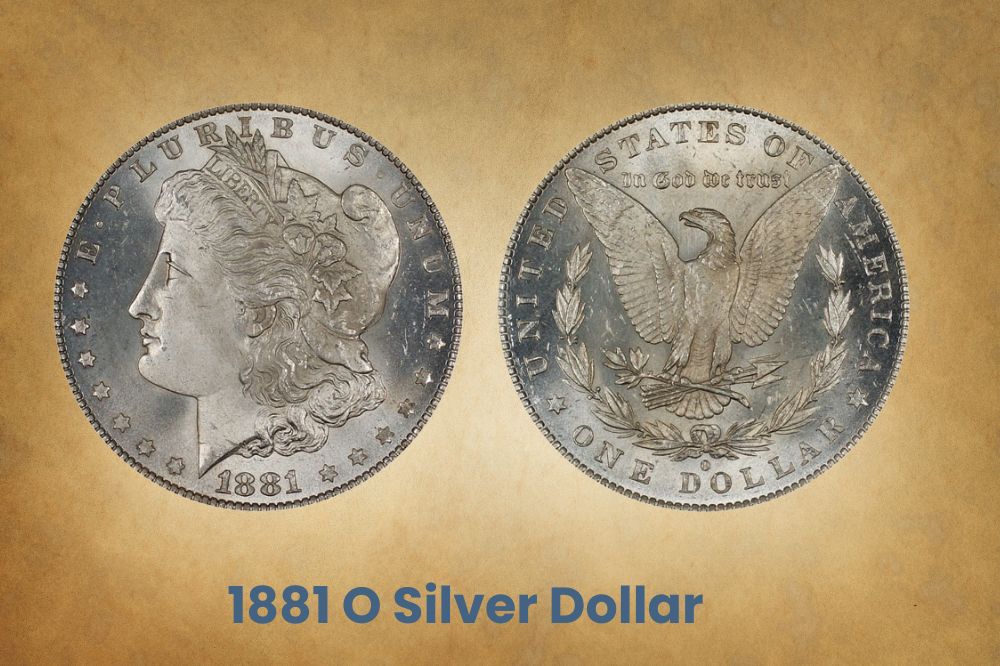
The New Orleans mint facility struck getting on for six million Morgan dollars in 1881. In circulated and lower mint state grades, prices are comparable to coins minted in Philadelphia and San Francisco. An XF45 coin will be worth around $50, while an MS63 coin will be worth around $120.
But examples at higher grades are rarer, and hence more valuable. An MS65 coin is worth around $1,250. That increases to $3,500 and $8,500 for prooflike and deep mirror prooflike examples.
The finest quality example assessed by the PCGS was grade MS67. There’s only one coin at this grade, and it’s valued at $75,000.
1881 CC Silver Dollar Value
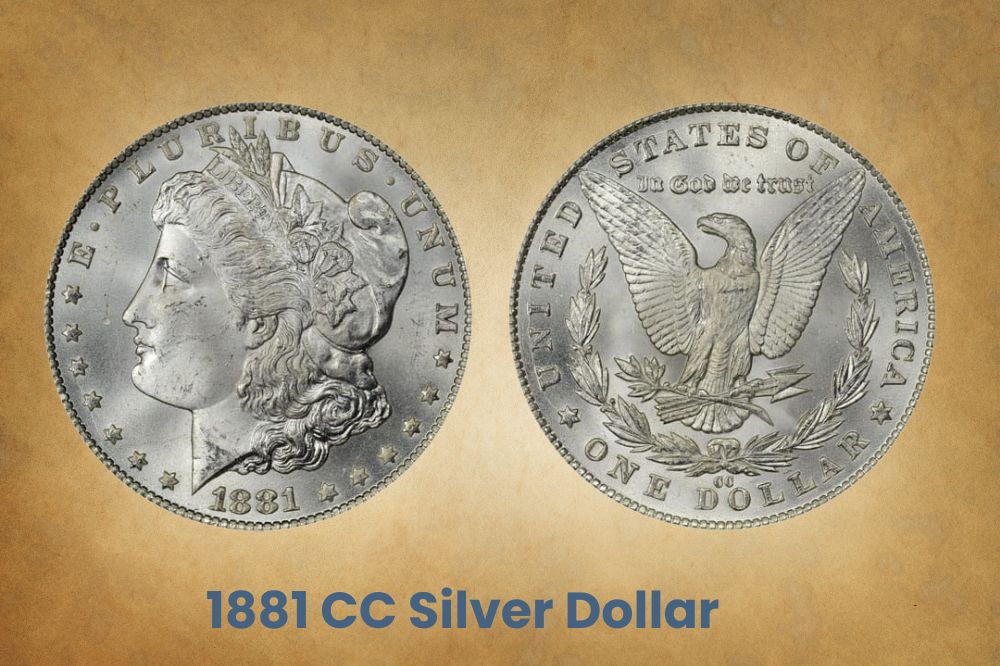
There are plenty of collectors for the Carson City Morgan dollar. Minted in the midst of the desert in the era of the Wild West, these coins have a romance all of their own.
They are also the rarest of all the mint marks. In 1881, just 296,000 silver dollars were struck at Carson City.
Even circulated coins can command big prices. An XF45 1881 Carson City dollar is valued at just under $500.
You might expect, then, that coins at higher grades would be wildly expensive. But surprisingly, that’s not the case. A mint state coin graded MS63 will be worth around $850. And at MS65, the value is about $1,250. As ever, there are premiums for prooflike and deep mirror prooflike coins.
The relatively modest values reflect availability. The PCGS has assessed over 5,000 Carson City dollars from 1881 at MS65. And there are nearly 300 graded MS67 (value about $6,000).
The really expensive specimens are graded MS67+ and MS68. The former is worth about $19,000. And the five known examples graded MS68 are worth around $65,000 apiece.
Related Posts: 11 Most Valuable One Dollar Coin Worth Money
1881 Silver Dollar Errors and Varieties
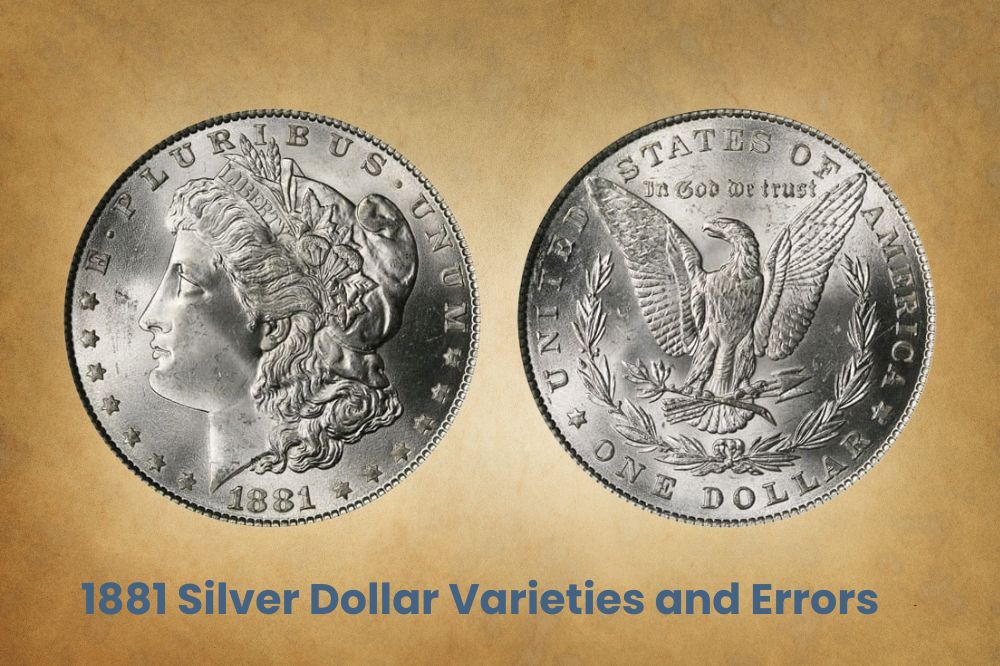
1881 Silver Dollar Varieties
1881 saw lots of variation in the fine detail of the Morgan dollar. This was largely the result of different die pairings. The PCGS lists 24 varieties from the Carson City facility, 54 from Philadelphia, 99 from New Orleans, and an astonishing 168 from San Francisco.
(Note that these figures count prooflike and deep mirror prooflike designations as separate varieties.)
To try and help collectors navigate this plethora of coins, each variety is given a VAM number. And the “Morgan Top 100” lists those varieties that add value to coins. Interestingly, none of the 1881 varieties make this list. But there are still many interesting varieties out there.
One is known as the “wounded eagle” (VAM 54B). It’s most easily identified by looking for a crack running down the reverse. Look at the wreath below the eagle and the “D” of “dollar” to spot it. An example of this coin graded MS65 sold for $1,000.
1881 Silver Dollar Errors
Error coins are so-called because they result from errors at the Mint. And because those errors are rare, such coins can be very valuable.
An 1881 silver dollar from San Francisco with a struck-through reverse sold for $540 in 2015. Something had got between the die and the press at the crucial moment, leaving a curving indentation on the coin surface.
Another San Francisco dollar with a filled die on the obverse sold for $1,620 in 2020. The grease-filled die had caused Liberty’s face to have a blurred appearance.
A rarer type of error is a coin that’s been struck off-center. An 1881 San Francisco dollar that had been struck 5 per cent off-center sold at auction in 2007 for just under $3,000.
Take a look at Treasure Town’s YouTube video to see some of these error coins in more detail.
Related Posts: 16 Most Valuable Presidential Dollar Coins Worth Money
History of the 1881 Silver Dollar
1881 was the third year in the series known as the Morgan dollars. These get their name from the man who designed them, George T. Morgan.
Morgan had traveled from the UK to work at the Mint, having been recommended by the Deputy Master of the Royal Mint in London. He took up the post of Chief Engraver, and enrolled at the Philadelphia Academy of the Fine Arts to improve his understanding of American design.
The Morgan dollars were to be produced in large numbers. A bill had been passed in 1878, the Bland-Allison Act, requiring the US Treasury to buy set amounts of silver every month. This silver was then to be converted to coins.
Both Morgan and the Chief Engraver, William Barber, produced designs for the new coins. But it was Morgan’s designs that were chosen by the Mint Director, Henry Linderman.
The large quantity of coins required to use up the Treasury’s silver meant that every Mint facility was pressed into service. The 1881 silver dollar was minted in Philadelphia, New Orleans, San Francisco and Carson City. (The Denver mint facility would not open until 1897.)
The coins were made of 90 per cent silver and 10 per cent copper. They weighed almost 27 grams and measured an inch and a half in diameter.
They continued to be produced every year until 1904. They were issued again in 1921, before making way for the Peace dollar. And in 2021, they were relaunched to commemorate 100 years after the transition.
The original Morgan dollars were minted in large numbers. But most were melted down when the Pittman Act was passed in 1918. This was a response to German propaganda causing a run on British silver in India. The Act authorized the melting of 350 million silver dollars, and the silver was sold to Britain.
It’s estimated that around 90 per cent of Morgan coins were melted in line with the new legislation.
Related Posts: 12 Most Valuable Susan B. Anthony Coin Worth Money
How to Identify 1881 Silver Dollar?
The Obverse of the 1881 Silver Dollar
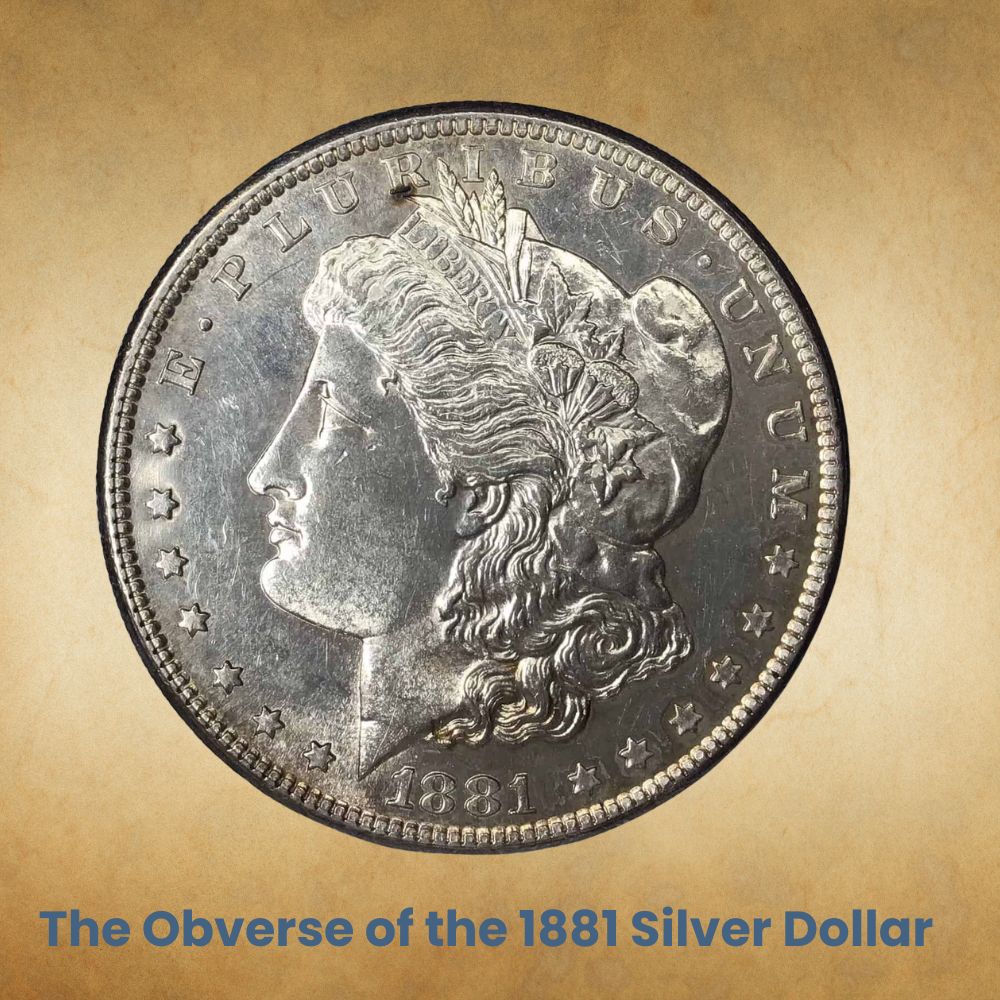
As with all Morgan dollars, the 1881 silver dollar depicts Lady Liberty on the obverse. But this Liberty was markedly different from those that had appeared on coins before.
The traditional images had portrayed Liberty in the classical Greek style, in draped robes and with a Grecian profile. But Morgan wanted his Liberty to be American. And he based his portrait on a living, breathing woman – Anna Willess Williams.
Anna came from Philadelphia, and was a teacher and author of philosophical writings. She was introduced to Morgan by his friend, the artist Thomas Eakins, for whom she had already modeled.
Morgan was convinced she would be perfect for the project. But Anna was reluctant to take part, agreeing only on condition of anonymity. Unfortunately for her, her identity was revealed not long after the coin was issued. She did not enjoy the ensuing celebrity, referring to it as an “incident of my youth”.
The coin shows the head and neck of Liberty in profile, facing left. Stars circle the image. Above it appears the Latin motto of the United States, “E pluribus unum”, meaning “From the many, one”. At the bottom of the coin is the year of issue.
The Reverse of the 1881 Silver Dollar
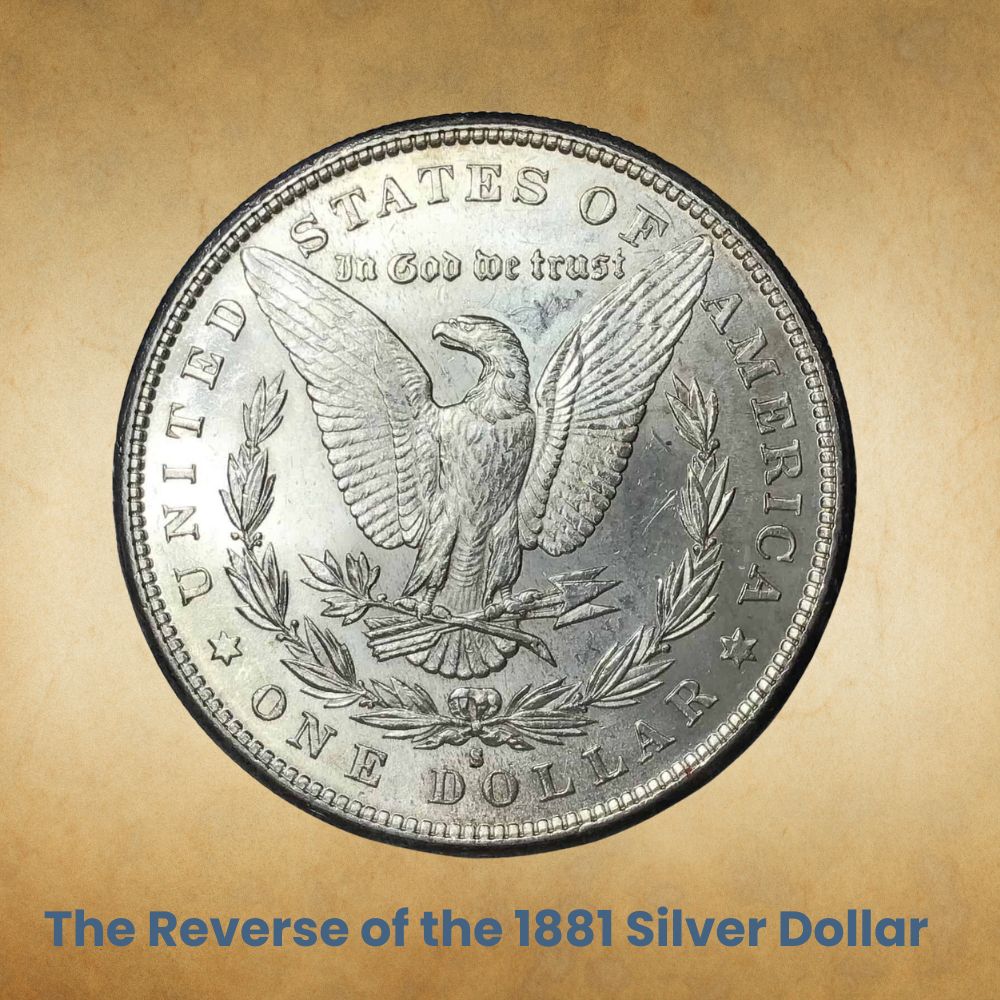
On the reverse – or the “tails” side – appears another great American symbol, the bald eagle.
Morgan’s design was based on life studies completed during his time at the Philadelphia Academy of the Fine Arts. It showed the eagle perched on a bundle of twigs, with wings outstretched and head lifted in the air.
Another design including an eagle was also submitted for contention by the Chief Engraver, William Barber. Barber’s eagle was upright, again with outstretched wings. But in this case, the appearance was more that of an heraldic emblem.
It fell to the Mint Director, Henry Linderman, to make the final decision. He chose Morgan’s more naturalistic design.
The design was amended, however, after a couple of weeks of production. The high relief was causing the dies to wear out too quickly.
The opportunity was also taken to reduce the number of feathers in the eagle’s tale from eight to seven. It had been pointed out that all previous eagles on American coinage had had an odd number of tail feathers.
Above the eagle, the words “United States of America” follow the curve of the coin. The denomination of “One dollar” is at the bottom, and any mint mark will appear just above it. (Coins minted in Philadelphia have no mint mark.) The reverse also features the words, “In God we trust”.
Other Features of the 1881 Silver Dollar
Look at the side of the 1881 silver dollar, and you’ll see a series of parallel lines. These run at right angles to the surface of the coin, and they’re known as a “reeded edge”. They were an early anti-fraud device, designed to prevent slivers of metal being clipped from coins.
There are lots of variations between the detail of different 1881 silver dollars. These include those resulting from different die pairings. The varieties are given their own “VAM” numbers to identify them.
Take a look at this YouTube video from ModernMiner to find out more about the Morgan dollar.
Related Posts: 18 Most Valuable Morgan Silver Dollar Worth Money
FAQs
How much is an 1881 Morgan silver dollar worth?
There’s a huge range in the value of 1881 Morgan silver dollars. Some can be picked up for tens of dollars, others for tens of thousands.
The value depends on the rarity of the coin. Alongside that goes quality and condition – the finer the coin, the fewer comparable examples there will be.
A circulated coin graded extremely fine is worth about $50. At the other end of the spectrum, an 1881 San Francisco Morgan dollar graded MS69 will be worth around $160,000.
What is the most valuable silver Morgan dollar?
The rarest silver Morgan dollars are generally those minted in Carson City. The rarest dates are 1893 and 1895. Find any mint state coin from those years, and they’ll be valuable.
The one and only 1893 San Francisco Morgan dollar graded MS67 last sold at auction in 2011. The price then was well over half a million dollars. Today, it’s valued at $2.25 million.
